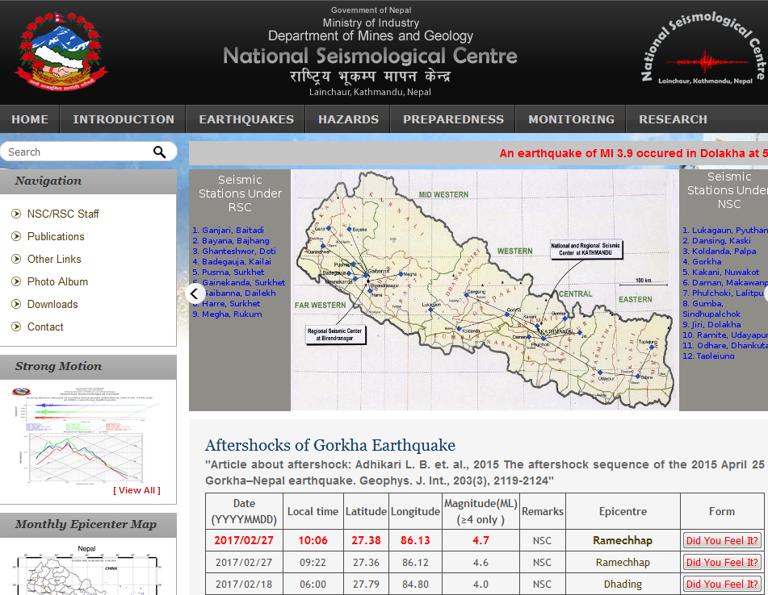
The introduction of this website is as follow:
The federal democratic republic of Nepal is located at the boundary between Indian and Tibetan tectonic plates and therefore lies in a seismically active region. Historical data evidence the occurrence of destructive great earthquakes in the past. Mitigation of earthquake risk can be made only with adequate assessment of seismic hazard which should be based on the evaluation of seismotectonic and geological process prevailing in this part of the world.
Microseismic monitoring is a very fast and efficient tool to understand the seismotectonics of the region. It is an instrument for seismic surveillance allowing a fast post earthquake rescue operation. For regional and global earthquake location and related seismological studies it provides a valuable database.
Microseimic monitoring in Nepal started in November, 1978 by Department of Mines and Geology (DMG), Ministry of Industry, government of federal democratic republic of Nepal in collaboration with Laboratoire de Geophysique Appliquee, Paris University, France with the installation of first short period vertical seismic station Phulchoki(PKI) hilltop in the south of Kathmandu. The number of stations were augmented gradually to create the National Network consisting of 21 short period seismic stations in 1998 and 7 accelerometer stations in 2012. The network is operated in collaboration with Department of Analysis & Surveillance of Environment (DASE), France. The 21 short period seismic stations and 7 accelerometer stations occupy the Lesser Himalaya and Sub Himalayan terrain of Nepal Himalaya uniformly.
Comment list ( 0 )
